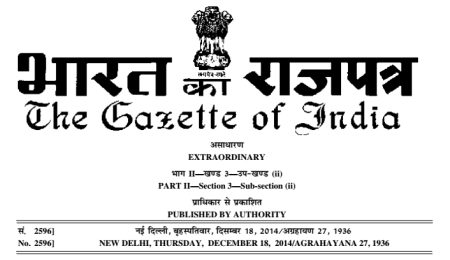
This edition of the Gazette of India, dated 18 December 2014, communicates a very significant decision for all of us who have an interest in the conservation and use of crop diversity. Here’s the exact language:
What this means is that genebanks under the management and control of the Government of India now have the formal go-ahead to fully implement the International Treaty on Plant Genetic Resources for Food and Agriculture, which India actually ratified a while back, of course. They won’t need to run every request for access to ex situ germplasm by the biodiversity authorities. Facilitated access indeed.

A bit confusing this. It seems to say that from `time to time’ the GoI Department of Agriculture can put Annex 1 samples into the ITPGRFA. But what will trigger this? Surely any country that has ratified the ITPGRFA should automatically put all its Annex 1 samples in and available for distribution – just as the CGIAR institutes do.
I had a bad experience with India when I was in CATIE. I offered duplicates of the entire IBPGR-designated global Capsicum collection to India in exchange for one (bred) sample of Black Pepper. No deal. The Indian pepper research station was under no obligation to distribute outside India (fair enough) – whereas we in CATIE were obliged to distribute to whoever asked for samples. It could be that the Department of Agriculture will decide not to distribute Annex 1 samples from `time to time’ if this could compromise national interests (certainly possible).
It could.